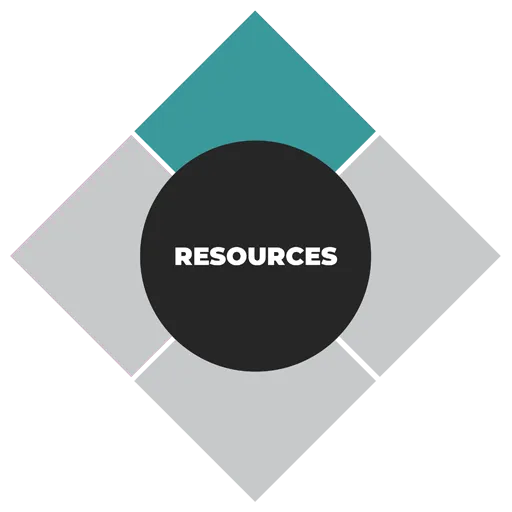
Talent Accountability – How to Ensure the Right People Own the Right Processes
Talent Accountability – How to Ensure the Right People Own the Right Processes
By RISE Business Framework
Why Talent Accountability is the Key to Business Success
One of the biggest mistakes business owners make is assuming that having good employees is enough. But without clear accountability, even the best team can struggle.
When no one truly owns a process, things fall through the cracks, deadlines get missed, and inefficiencies grow. The solution? Talent Accountability.
In this article, we’ll break down:
✅ What talent accountability is and why it’s crucial
✅ The biggest accountability mistakes businesses make
✅ How the RISE Business Framework ensures the right people own the right processes
✅ Actionable steps to improve talent accountability in your business
What is Talent Accountability?
In the RISE Business Framework, Talent Accountability is one of the four key areas of the Resources Quadrant. It focuses on making sure:
✔ Every role has clear ownership of specific processes
✔ Employees understand their responsibilities and expected outcomes
✔ There’s a system in place to track accountability and performance
Accountability is not just about assigning tasks—it’s about owning results. A business thrives when every team member knows exactly what they’re responsible for and how their work impacts the company’s success.
Why Businesses Struggle Without Talent Accountability
Lack of accountability can lead to:
❌ Confusion Over Roles – Employees are unsure who is responsible for what, leading to missed deadlines and inefficiencies.
❌ Lack of Ownership – Tasks get passed around without clear leadership, slowing down execution.
❌ Wasted Time & Resources – Without accountability, businesses spend more time fixing mistakes than making progress.
❌ Decreased Employee Engagement – When people don’t feel responsible for results, motivation and performance decline.
❌ Leadership Burnout – Business owners and managers take on too much because they don’t trust their team to deliver.
Without accountability, a business becomes reactive rather than proactive, constantly putting out fires instead of growing strategically.
How to Implement Talent Accountability in Your Business
The RISE Business Framework helps businesses create a culture of accountability with clear roles, expectations, and performance tracking.
Step 1: Define Clear Roles & Responsibilities
🔹 Use an accountability chart (not just an org chart) to clarify who owns what.
🔹 Every key process in your business should have an owner, not just a team responsible for it.
🔹 Example: Instead of “Marketing Team” being responsible for lead generation, assign it to one accountable person.
Step 2: Implement Key Performance Indicators (KPIs)
🔹 Define measurable goals for each role (e.g., sales targets, project deadlines, customer retention rates).
🔹 Use weekly check-ins to track performance and progress.
🔹 Employees should know what success looks like in their roles.
Step 3: Use Stoplight Reports for Accountability
🔹 In the RISE Business Framework, businesses use Stoplight Reports to track KPIs and performance.
🔹 Green = Success, Yellow = Needs Attention, Red = Problem Area.
🔹 This system keeps teams focused and accountable without micromanagement.
Step 4: Conduct Regular Accountability Meetings
🔹 Hold weekly and monthly check-ins to ensure employees own their processes.
🔹 These meetings should review KPIs, discuss challenges, and adjust strategies as needed.
🔹 Example: If customer service ratings drop, who owns the process of improving them?
Step 5: Build a Culture of Ownership
🔹 Empower employees to make decisions within their roles.
🔹 Recognize and reward accountability with bonuses, promotions, and public recognition.
🔹 Shift from a blame culture to a solution-oriented culture—if something goes wrong, focus on fixing the process, not pointing fingers.
Frequently Asked Questions (FAQs)
FAQs About Talent Accountability
1. Why is accountability important in business?
Without clear accountability, businesses experience confusion, inefficiency, and missed opportunities. Employees need to own processes, not just tasks.
2. How do you hold employees accountable without micromanaging?
3. What’s the difference between an org chart and an accountability chart?
An org chart shows the hierarchy of roles, while an accountability chart defines who owns specific processes and outcomes.
4. How can I measure accountability in my team?
FAQs About the RISE Business Framework
1. What is the RISE Business Framework?
The RISE Business Framework is a business growth system designed to help companies reach 100% of their potential by focusing on four key quadrants:
1️⃣ Resources – Talent, Time, and Money
2️⃣ Inspiration – Leadership, Vision, and Culture
3️⃣ Systems – Processes, KPIs, and Execution
4️⃣ Engagement – Marketing, Sales, and Branding
2. How does RISE improve accountability?
By implementing accountability charts, KPIs, Stoplight Reports, and structured meetings to track performance.
3. Who created the RISE Business Framework?
The system was developed by Gary Harper, Brandon McCurdy, Susan Harper, and Austin McCurdy to help businesses maximize efficiency.
4. How can I get started with RISE?
Final Thoughts
If you want a high-performing business, you need clear accountability. It’s not just about assigning tasks—it’s about ensuring every role has a true owner.
By implementing accountability charts, KPIs, Stoplight Reports, and structured meetings, your team will work with clarity, efficiency, and ownership.
🚀 Want to take your business accountability to the next level? Read the full RISE Business Framework guide here: Read More
